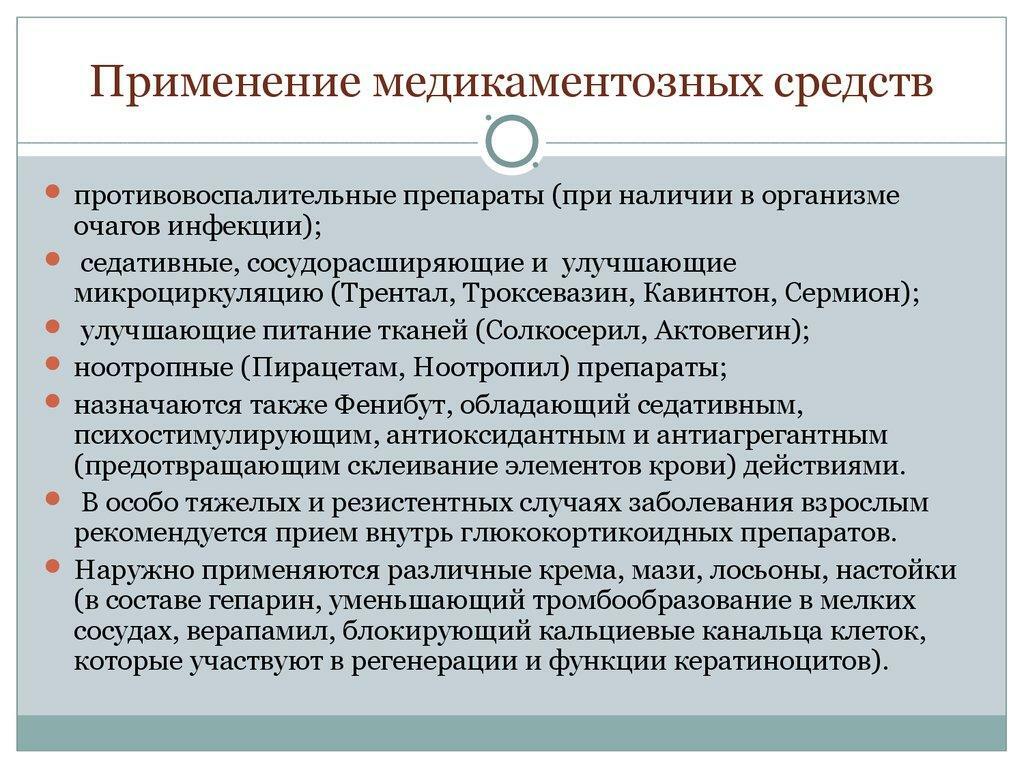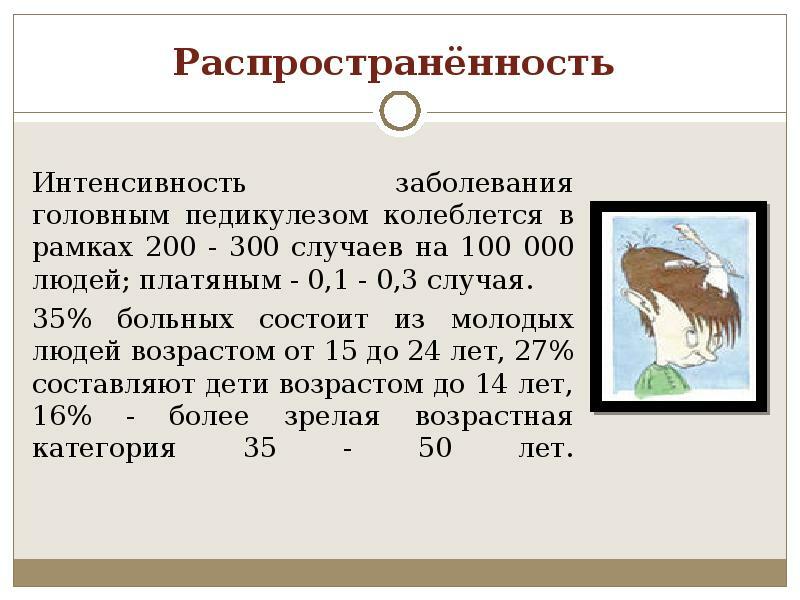Shingles, or herpes zoster, is an infectious disease caused by the varicella zoster virus. This pathogen is tropic in relation to the skin and nervous tissue, that is, it affects not only the skin but also the elements of the nervous system.
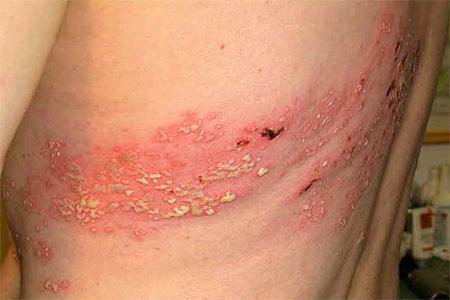
Shingles and its treatment
For the disease is characterized by a strong burning pain, increasing at night. An increase in the intensity of the pain syndrome is also promoted by various irritating factors, for example, cold or increased ambient temperature, touch. There may be a sensitivity disorder. The visual manifestation is swelling and redness, which is followed by a rash that appears in a few days where the affected nerve passes. The skin is cleansed from rashes for a maximum of 4 weeks, and the pain syndrome can persist for up to several months, causing inconvenience to the person.
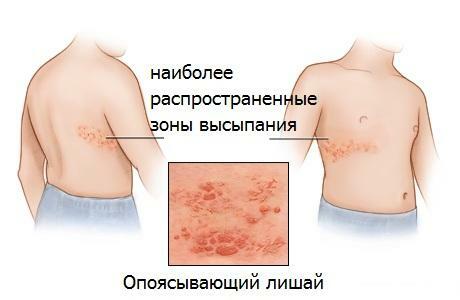
Zones of rash
The danger of herpes zoster is the development of complications in the form of attachment of a bacterial infection leading to inflammation of the brain and meninges, heart muscle, kidneys, lungs, joints. It is pneumonia that significantly increases the risk of death in this herpes disease.
Etiology of the disease
Varicella Zoster belongs to the herpetic group. It is also called type 3 herpes. The virus can cause the development of two diseases.
- Varicella is a very common, highly contagious pathology that affects mainly children. In adults it happens rarely. Most patients suffered this infection before puberty. It is in childhood that the disease proceeds more easily and leads to the formation of persistent immunity. After an acute infection, the virus in the inactive state remains in the nerve cells. Relapse occurs rarely and leads to the development of a second form of the disease.
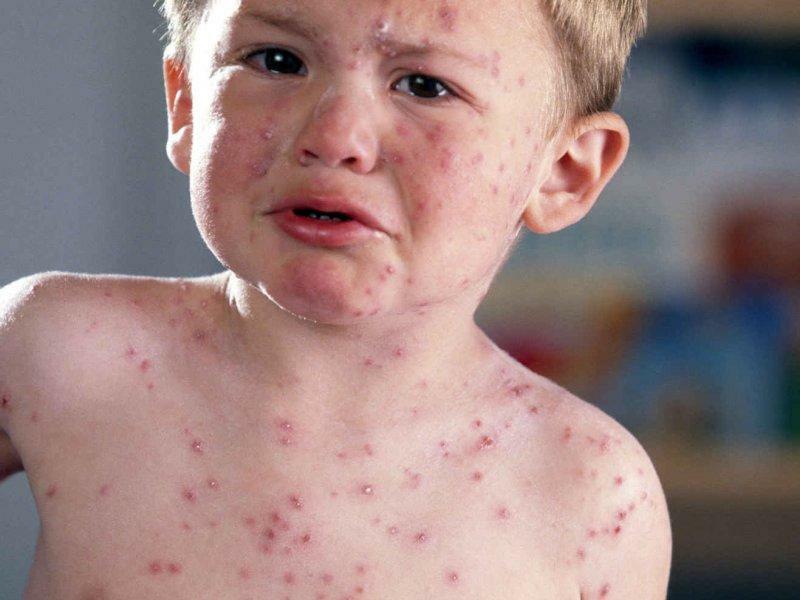
Chicken pox
- Herpes zoster is more common in adults. Children are extremely rare. The manifestation of the disease can occur both after the primary infection and during the secondary activation of the "sleeping" virus in the intervertebral nerve nodes and posterior horns of the spinal cord. More often it is the second variant of the origin of the disease.
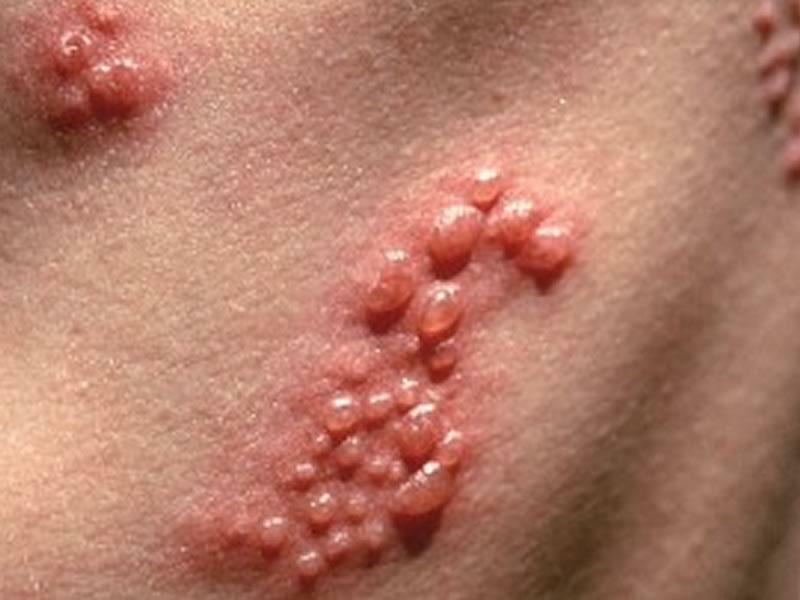
Skin rash with herpes zoster
The virus has three modes of transmission:
- airborne;
- pin;
- is possible and transplacental path( from mother to fetus).
The source of infection is only a person suffering from chickenpox or shingles. Usually, in contact with an adult who has a second form of the disease, the child develops chickenpox, and vice versa. A person is considered infectious for two days before the first manifestations of the virus and even until all the crusts dry and fall off. However, in most cases it is not dangerous for those who already had chickenpox. Skin flakes are not considered infectious.
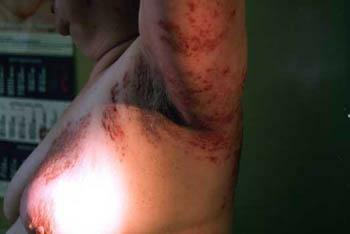
Herpes shingles - infection
Primarily the virus penetrates the body through the mucous membranes, then spreads blood and lymph to the skin and nervous structures( spinal and cerebral nodes, spinal cord horns, oblong brain structures, etc.).
Shingles more often develop secondary against the background of a decrease in the total immune status of a person, which can occur in several cases:
- in HIV infection;
- against other infectious diseases;
- for injuries;
- as a result of taking drugs that suppress immunity, steroid and non-steroidal nature;
- with a decrease in immunity, caused by other causes( stress, malnutrition, overwork, etc.);
- because of cancer( lymphogranulomatosis) or diabetes mellitus.
Important! Frequent repetition of relapses in the same place can be an indirect sign of an oncological disease.
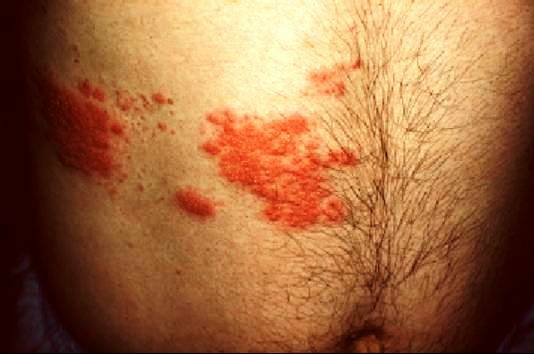
Lishay with reduced immunity
It is with AIDS, cancer, immunosuppressive therapy, shingles occur in the most serious form. In these cases, the risk of generalization of the disease accompanied by lymphadenitis, intense rashes is high.
Shingles are more susceptible to males over 40 years of age. Elderly and senile age, as well as diabetes mellitus are risk factors for the development of the most severe form of the disease - gangrenous, which is characterized by necrotic ulcers covered with dark crusts.

Gangrenous form of lichen
The incidence rate in the autumn-winter period is typical.
How to treat shingles?
Herpes zoster therapy should be comprehensive and include both an impact on the virus, aimed at blocking its spread, and symptomatic.
| Therapy | Description |
|---|---|
 Systemic antiviral therapy | From antiviral drugs, the effect of which has been studied, it is necessary to take acyclovir, which stops the reproduction of the virus and does not exert teratogenic, mutagenic and poisoning cells, from the very first stages of the disease. The daily dosage of this medication is 4 g, divided into 5 receptions( 4 tablets 5 times). Valaciclovir has a better bioavailability, so its dosage is 3 g per day, taken for 2-3 doses. Another effective form is famciclovir, which is taken three times a day for 250 mg. The duration of antiviral treatment may be up to 2 weeks. |
 Other systemic medicines | Gangle-blockers( ganglefen), which reduce pain, are prescribed as intramuscular injections( once a day) or for oral administration( twice a day).In a number of cases, carbamazepine is used, the dose of which is gradually increased from 0.1 g twice daily, to 0.6 g, and maximum to 0.8 g. Reduce the dosage gradually after pain relief. Anesthetics are also prescribed for NSAIDs( non-steroidal anti-inflammatory drugs), for example, diclofenac. Analgesics are often prescribed in combination with tranquilizers. In case of bacterial infection, antibiotics are selected on an individual basis. If the patient is very concerned about the itching, then the use of antihistamines, such as cetirezine and loratadine, is justified. |
 Local therapy | To speed up drying and to prevent suppuration of bubbles, rashes are often prescribed by local treatment with fucorcin, diamond greens or other solutions of aniline dyes. However, many doctors do not recommend this method and consider local therapy useless and even dangerous. |
 Non-medicamentous treatment | Reflexotherapy, physiotherapy is necessary to relieve the pain syndrome, which persists after the acute phase subsides. |
Important! At the time of treatment, the disease is canceled immunosuppressive therapy.
Treatment of herpes zoster is performed by a dermatologist. It is often necessary to consult a neurologist to fight neuralgia.
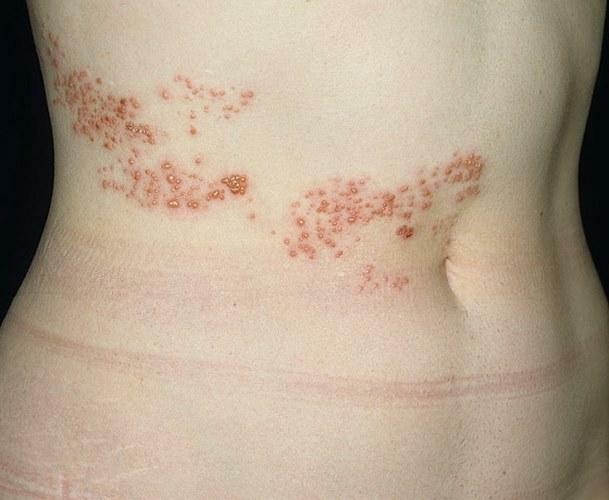
Shingles: treatment
Visiting a doctor is an obligatory measure, as the development of the disease often occurs against the background of a decrease in immunity, when there is a risk of complications of the disease.
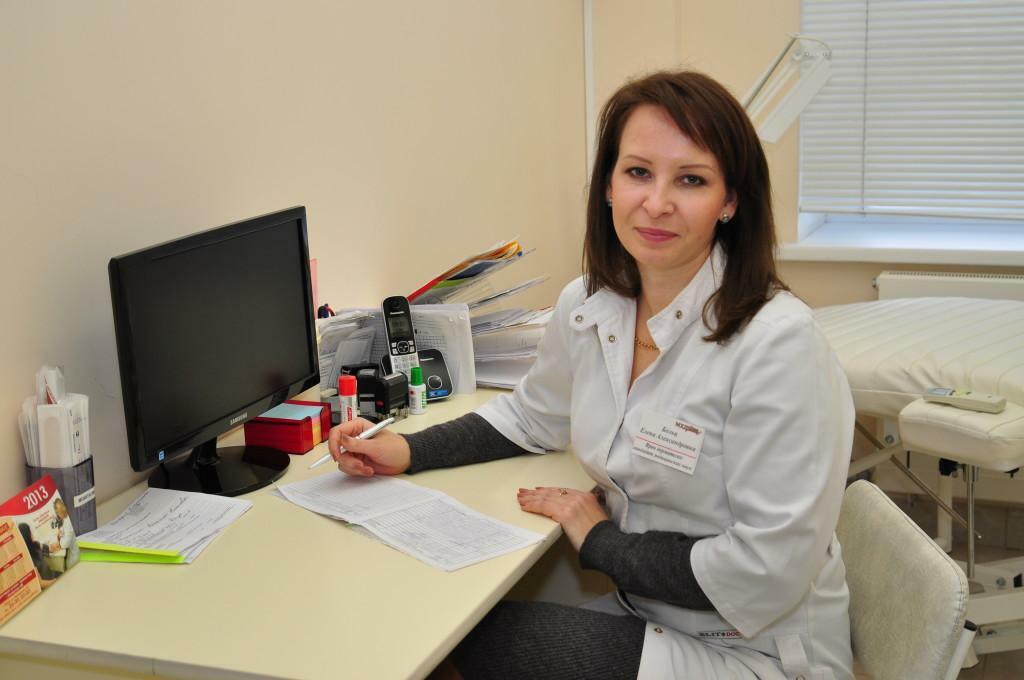
Consult a dermatologist at the first sign of depriving


